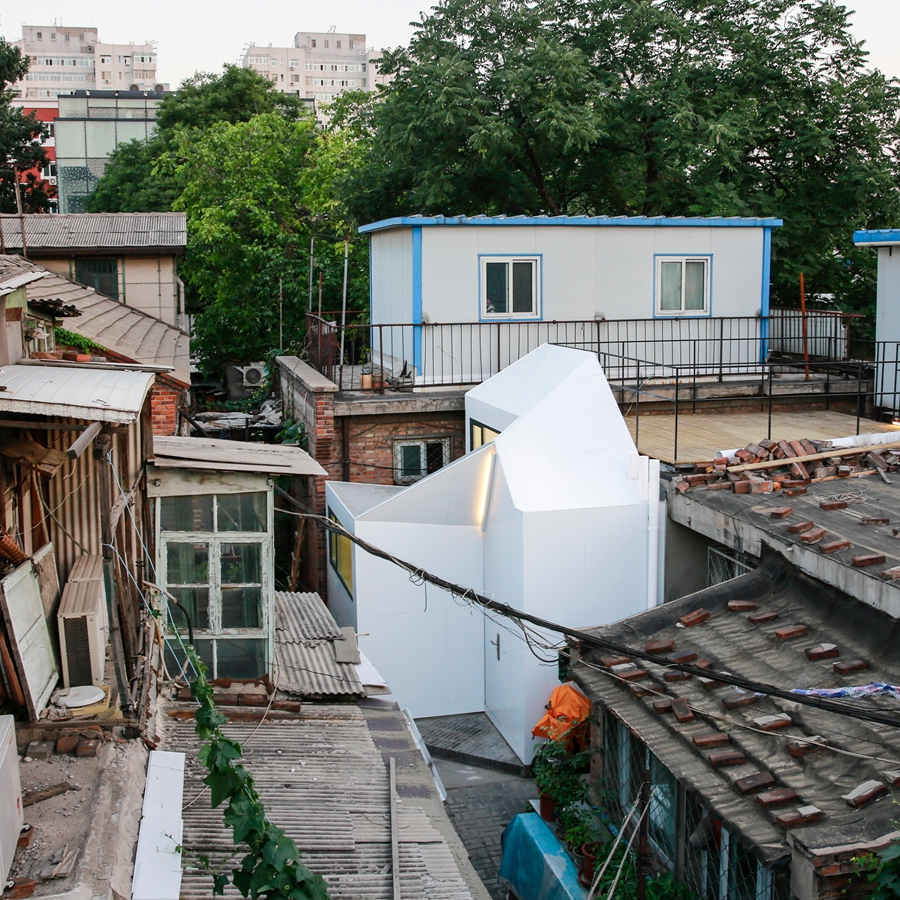Preserving and Honoring Beijing’s Hutongs
China Today by Degen Hill,April 20, 2018 Adjust font size:
Public Spaces
For many, the hutongs represent a communal way of life, treating the neighborhood as a shared community. With that in mind, many architectural projects in the hutongs have renovated their space to be used for the community. For example, architect Zhang Ke is one of the designers behind Beijing’s Micro Hutong Renewal Project. In an article published last October in architecture magazine Dezeen, Zhang stated, “This project aims to explore co-living possibilities between public and private in the traditional courtyard structure, and it challenges ways of infrastructure integration in limited space to create decent hutong life.” His Beijing studio designed and built a 30-square-meter hostel as part of its ongoing Micro Hutong Renewal project. “The goal of this project is to search for possibilities of creating ultra-small scale social housing within the limitations of the super-tight traditional hutong of Beijing,” they explained.
Another example is Hong Kong studio, Space Modification Unit (SMU), which designed the 250-square-meter teahouse in one of Beijing’s rapidly redeveloping hutong neighborhoods. “The DeHui Tea Space is an island offering tranquility and indulgence in a harsh world,” said SMU. “The facade frames the view inward to intimate spaces for contemplation and meeting up with friends.”
One thing that can be found in many hutongs are small coffee shops, providing a break from the fast-paced life of the capital. To create a space open to the public, Office AIO converted a courtyard residence in Beijing’s Xiang’er Hutong into a tiny 19-square-meter, cork- and tile-lined coffee bar. It also includes a traditionally styled 15-square-meter guestroom in the back, connected to the coffee bar by a courtyard shared with an elderly neighbor.
Other examples include Chinese studio, Origin Architect, converting an abandoned printing factory in Beijing into a theatre complex, Beijing architecture firm reMIX Studio transforming a traditional house in the city’s Dashilar area into its own office space, blending glass and steel with the original wooden structure, and the last is the Micro Hutong Renewal project which strives to show how traditional courtyard spaces can be renovated to create resources for local communities, ranging from children’s play spaces to co-working areas.
As the development of China continues, the thought of preserving Beijing’s ancient past is always at the forefront of designers’ minds. “Preserving hutongs for us means keeping the community network intact,” Shen said. “It’s important that any development in these areas are well managed to ensure the community is inclusive, diverse, and vibrant. Preserving hutongs for me does not mean simply keeping old buildings or renovating them; if a diverse community doesn’t live there, it would be pointless.”

